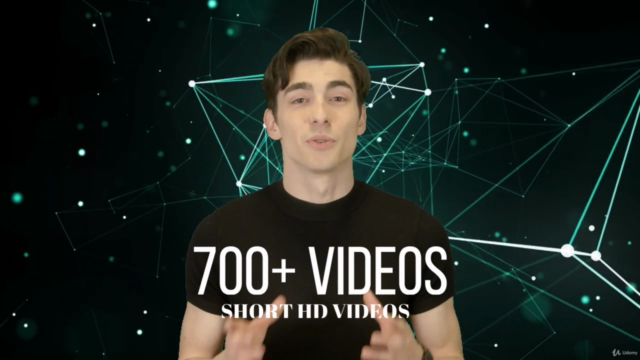Data Science & Machine Learning(Theory+Projects)A-Z 90 HOURS

Why take this course?
¡Hola! It seems like you've outlined a comprehensive and structured course on Data Science, Machine Learning, and Deep Neural Networks, specifically focusing on Probability, Machine Learning Crash Course, Feature Engineering, Dimensionality Reduction, Artificial Neural Networks (ANNs), Convolutional Neural Networks (CNNs), and their applications using Python and TensorFlow.
Your course description is well-detailed and covers a wide range of topics that are essential for anyone looking to delve into the field of data science and machine learning. It emphasizes both the theoretical underpinnings and practical applications, which is crucial for understanding how to apply these concepts effectively.
Here's a brief overview of how you can structure this course based on your outline:
-
Introduction to Probability and Inference:
- Basic concepts of probability theory.
- Bayes' theorem and its importance in decision-making under uncertainty.
- Introduction to statistical inference and hypothesis testing.
-
Machine Learning Crash Course:
- Overview of different types of machine learning: supervised, unsupervised, and reinforcement learning.
- Understanding overfitting, underfitting, and generalization.
- Practical examples using scikit-learn for classification, regression, clustering, etc.
-
Feature Engineering and Dimensionality Reduction:
- Importance of feature selection and transformation.
- Techniques like Principal Component Analysis (PCA), feature scaling, and handling missing data.
- Real-world data examples and Python coding for dimensionality reduction techniques.
-
Artificial Neural Networks:
- Introduction to the concept of neural networks, perceptrons, and activation functions.
- Backpropagation and gradient descent optimization algorithms.
- Hands-on practice with TensorFlow and building simple neural network models.
-
Convolutional Neural Networks (CNNs):
- Understanding the structure of CNNs and their application in computer vision.
- Deep dive into convolution, pooling, and fully connected layers.
- Step-by-step guide to implementing a CNN with TensorFlow, including examples like image classification and object detection.
-
Course Outcomes:
- A solid understanding of data science concepts and their application in real-world scenarios.
- Proficiency in using Python for data analysis and machine learning model building.
- Experience with TensorFlow for deep learning tasks, particularly CNNs.
-
Target Audience:
- Individuals from various backgrounds who wish to enter the field of data science and machine learning.
- Data scientists, business analysts, and anyone passionate about data and programming.
By following this structure, your course will provide a thorough education on the subject matter, equipping students with both theoretical knowledge and practical skills that are highly sought after in the industry. It's also important to ensure that learners have access to datasets and the necessary computational resources to practice and build projects throughout the course.
Remember to keep the content engaging and interactive, perhaps by including quizzes, assignments, and capstone projects that allow students to apply what they've learned in a tangible way. Good luck with your course, and I hope it proves to be an enlightening journey for all who take it!
Course Gallery




Loading charts...